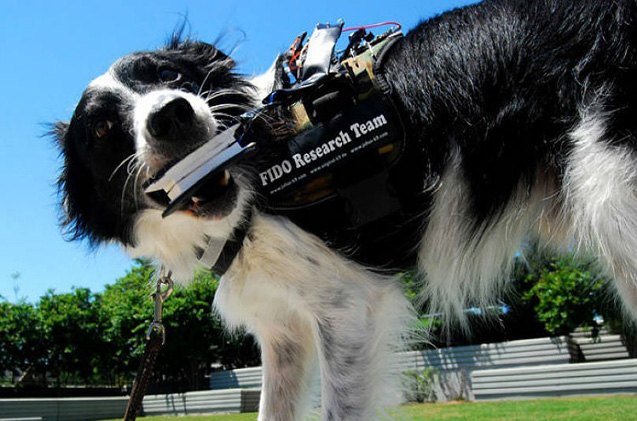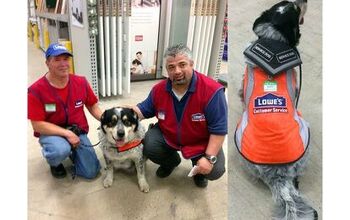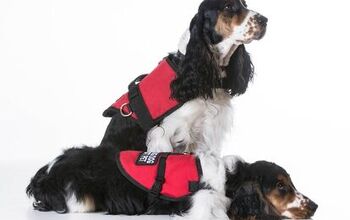New Tech Vest Gives Service Dogs a Voice

Melody Jackson is the brainchild behind a piece of technology that could provide invaluable information to service dogs, therapy dogs and military bomb-sniffing canines.
Jackson earned her Ph.D. in computer sciences from Georgia Tech in 1998, the same institute she now serves an associate professor. She has also been training assistance dogs for nearly 20 years. When she put her two passions together, she invented a vest that comes equipped with the ability to send audible cues or text notifications to smartphones with just a touch of their snout using sensors.
Related: Top 10 Service Dog Breeds
The project, called FIDO (Facilitating Interactions for Dogs with Occupations), is being sponsored by The National Science Foundation as well as the Defense Advanced Research Projects Agency (DARPA). More importantly, the vests have been approved by Jackson’s 8-year-old Border Collie, Sky.
“He actually has helped us design a lot of these sensors, by telling us what works and what doesn’t work,” she says. “So, he’s sort of our first line of testing before we go out to the rest of the world. He’s a very critical part of our design team.”
The vest is equipped with a number of sensors that dogs can trigger either with a bite or nudge of their nose. They were trained with toys and know how to identify between a Frisbee and a ball – this is an example of “discrimination task.” In the future, this can help service dogs in the military, for example, tell their handlers not only that they found a bomb, but what kind of bomb it is.
“A bomb-sniffing dog has pretty much one alert that says, ‘Hey, I found an explosive.” But that dog knows what explosive is in there. … They know if it’s something stable like C4 or something unstable and dangerous like TATP that needs to be handled carefully,” Jackson says. With this vest, they will be able to tell their handler what kind of bomb it is and, better yet, tell their handler without leaving the scene.
Related: Retired Marine Dog Awarded Highest Military Honor
Jaskson and her research team, which includes professor Thad Starner and research scientist Clint Zeagler, have also developed a medical alert vest which allows the dog to activate a sensor on their vest to communicate to victims of disasters. Better yet, they are also developing a vest that tracks the dog’s location using GPS. This would be incredibly useful during a natural disaster such as an earthquake, where a trapped person needs help. The search-and-rescue dog can find the person, activate a sensor telling the injured party that help is on the way, activate another sensor to send out GPS coordinated to their handler and stay by their side until help arrives.
The team is also developing yet another vest to assist those who are visually impaired or deaf so the dog can alert them to things like a doorbell or ask for someone’s help when their human handler needs attention using yet another sensor. With this vest, the possibilities of what it can do in situations is virtually endless.
The vest is currently being tested by a real service dog team in California, and Jackson believes any dog would be able to pick up on the technology quickly. In fact, one of her dogs was able to understand the vest’s capabilities in a mere 27 seconds, so getting other dogs to learn doesn’t seem that hard after all! We can’t wait for this awesome vest to hit production lines to make service dog jobs a little easier and better for the canine and their human handlers.
[ Source: ClickColorado ]

More by Diana Faria























